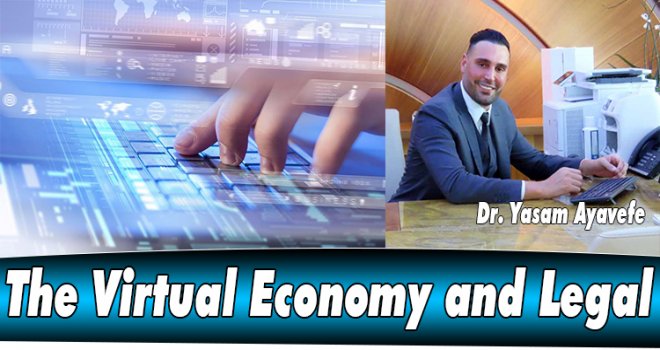The Virtual Economy and Legal Order

To what extent does economics make it possible to address the problem of the construction and enforcement of the legal order of the Internet? What rules should be chosen? How is it applied?
Analysis begins with an observation. Legal problems encountered in the virtual world are not fundamentally different from those in the real world.
The Internet user may also have to incur losses while traveling on information highways, such as a traffic accident victim. For example, the contents of a computer's hard disk can be destroyed by a virus upon receipt of a message.
Similarly, the protection of privacy is at the center of the concerns of Internet users who create and use websites. How to obtain the consent of the persons involved in the collection and dissemination of private information?
What protection must be provided to ensure respect for human rights? In terms of e-commerce, contracts include various aspects that can cause a lot of conflict: late delivery, fraudulent use of bank card number, etc. Internet users therefore face numerous legal risks.
This article examines the extent to which the legal economy model can be transferred to the virtual space to create an effective legal order on the Internet. That is, it examines a set of rules that contribute to minimizing the social cost of new IT risks.
First, it seems useful to present a model of legal economy based on two main types of rules of law:
- Property rules and
- Responsibility rules.
Depending on the approach taken, the choice between these two types of rules depends on the particular case being considered. It depends on the level of transaction costs and the presence or absence of information asymmetries.
Secondly, it is necessary to question the extent of these phenomena in the virtual world. On the one hand, the reduction in transaction costs on the Internet is leading to the promotion of property rules as a form of regulation of new IT risks.
However, the existence of information asymmetries that allow Internet users to adopt strategic behaviors shifts in favor of the rules of accountability.
In the economic analysis of law, a new question arises when considering the difficulty of applying the rules of law in the virtual space.
This question of enforcing rules raises, more generally, the question of the division of roles between centralized and decentralized regulation.
In fact, rules often require the central intervention of an impartial third party, that is, a judge responsible for interpreting the data in each particular case.
Therefore, it is appropriate to question the role of the courts in the context of the Internet, namely the possibility of applying the rules of law in the virtual world.
The result of this analysis is that certain features of the Internet make it difficult and costly to forensically and centrally regulate risks in the virtual world.
Consequently, this observation raises questions about the possibility of decentralized regulation.
LIABILITY RULES
Highlighting new IT risks means identifying outside influences in the Internet sandbox. This finding leads to the identification of appropriate corrective measures.
Legal economics traditionally makes a distinction between property rules and liability rules. Each rule category has features for the purpose of internalizing these external costs.
Property rules are prohibition rules. They aim to prevent the forcible confiscation or infringement of the property of others. It is a form of pre-regulation of activities that create external influences.
Responsibility rules, on the other hand, are remedial rules that aim to deter certain behaviors through a regulatory mechanism.
The idea is that the owner of the potential damage and the victim change their risk avoidance behavior depending on whether the owner of the damage can be held responsible.
In practice, the two types of rules rely on different mechanisms to allow for the correction of externalities. Property rules use the injunction method, while liability rules favor the indemnity principle.
When the regulator chooses a property rule, it must establish a enforcement mechanism against those who do not comply with the injunction. It is generally accepted that the penalty (usually a fine) should be set at a sufficiently high level. So, the latter prefers not to break the rule.
Responsibility rules, on the other hand, use the harm mechanism to repair the victim's bias in the event of an externality.
From a legal economics perspective, the problem consists of comparing the effectiveness of the two devices to achieve internalization of external costs.
A complementary approach proposes to compare the costs of defining ownership rules with the costs of interpreting standards.
Indeed, property rules consist of defining regimes of prohibition or pre-authorisation. Responsibility rules, on the other hand, assume the existence of norms or standards of behavior interpreted by the courts.
Dr.Yaşam Ayavefe
-
 Küfür ediyor ve siyasi yorumlarıyla tepki çekiyor: Musk'ın sohbet botu Grok nede..
Küfür ediyor ve siyasi yorumlarıyla tepki çekiyor: Musk'ın sohbet botu Grok nede..
-
 YDP, Gençlik Şöleni düzenliyor: Gençler siyasete katılıma teşvik edilecek..
YDP, Gençlik Şöleni düzenliyor: Gençler siyasete katılıma teşvik edilecek..
-
 ABD, Heyet Tahrir Şam'ı terör örgütü listesinden çıkardığını duyurdu
ABD, Heyet Tahrir Şam'ı terör örgütü listesinden çıkardığını duyurdu
-
 ARIKLI: GENÇLERE MADDİ MANEVİ HER TÜRLÜ DESTEK SAĞLANMALI
ARIKLI: GENÇLERE MADDİ MANEVİ HER TÜRLÜ DESTEK SAĞLANMALI
-
 Othello Folklör Master ekibi Bosna'daydı
Othello Folklör Master ekibi Bosna'daydı
-
 İEZB Başkanı Serkan Kırmızı’dan KIB-TEK’e Sert Tepki: Bu Bir Enerji Beka Sorunud..
İEZB Başkanı Serkan Kırmızı’dan KIB-TEK’e Sert Tepki: Bu Bir Enerji Beka Sorunud..
-
 Milli sporcumuz Azra Avcı U14 Türkiye Şampiyonu oldu!
Milli sporcumuz Azra Avcı U14 Türkiye Şampiyonu oldu!







